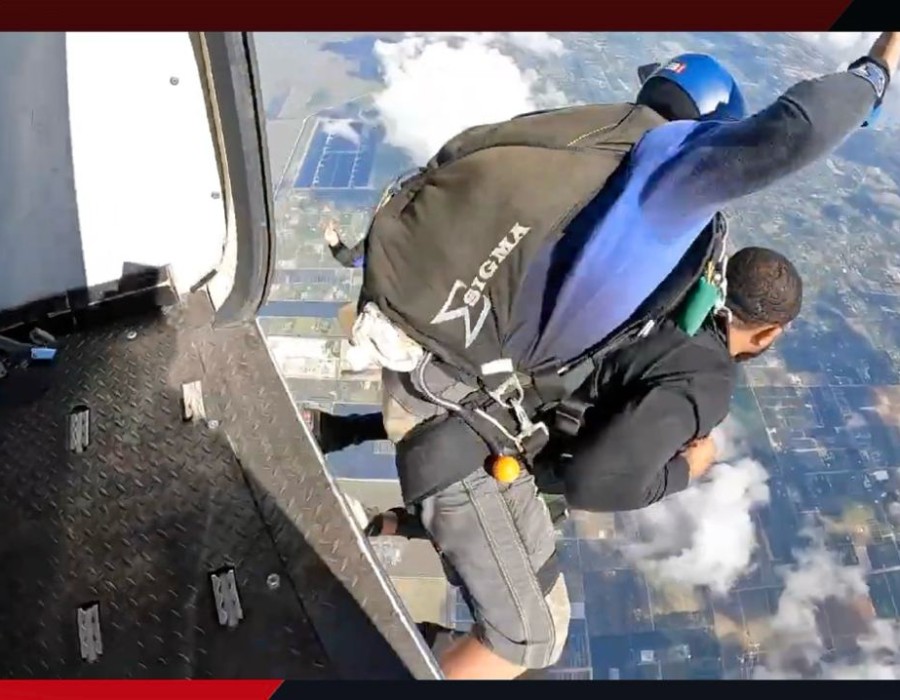Every weekend, we see them walk through the doors—tight-lipped, palms sweaty, pretending to act cool while scanning the sky. First-time jumpers are easy to spot. They’ve spent the week talking themselves into this. And despite all the nerves, they still show up.
That tells you something right away: people aren’t skydiving to prove anything to others. They’re doing it for themselves.
The truth is, skydiving has a reputation as a bucket-list thrill. But what we see at the drop zone goes way deeper than adrenaline. Something happens up there—some mix of pressure, trust, and weightlessness—that resets a person in ways most don’t expect.
The Real Fear Isn’t the Jump
People think they’re afraid of falling. They’re not. They’re afraid of letting go. Afraid of the unknown. Afraid of not being in control.
We see it all the time. Jumpers gripping their harness straps before takeoff like it’s going to anchor them. Some laugh too loudly. Some say nothing at all. Some try to back out right before the door opens.
And then, in nearly every case, they jump.
Why?
Because when you’re that close to the edge, the fear becomes something else—it becomes focus. The plane noise disappears, and so does the second-guessing. You’re present. Fully. In a way few things can pull out of you.
And for first-timers, that shift stays with them long after the landing.
Freefall is Fast, But the Change is Instant
At 13,000 feet, the world below looks peaceful. Even in a busy area like Dallas Fort Worth, the skyline is just a shape, the trees a blur. Then the door opens. The wind slams into the cabin. There’s no time for overthinking.
And that’s what makes it powerful. You leave the plane, and in that moment, something clicks. For about 40–50 seconds, you’re falling fast—120 miles per hour—but inside, it’s calm. Strangely calm. Your body is busy, but your mind goes quiet.
The parachute opens, and now you’re floating. You hear your breath again. You see the roads, the rooftops, the tiny squares of farmland. It’s peaceful. It's personal.
By the time your feet touch the ground, the fear is gone. What’s left is a kind of clarity.
Why Trust Is Everything
No one jumps out of a plane alone their first time. You’re clipped to an instructor who’s done this hundreds—sometimes thousands—of times. At our Dallas Fort Worth drop zone, many of our instructors come from military or competitive skydiving backgrounds. That experience matters.
But more than the flight hours, it’s how they handle people. First-time skydivers don’t need a hype man. They need someone calm, clear, and steady. Someone who doesn’t just throw facts at them, but pays attention to how they’re actually feeling.
Our job as instructors is to build trust before the plane even leaves the ground. We explain every step, show the gear, double-check everything in front of them. We make eye contact. We stay calm. When someone is visibly nervous, we don’t brush it off. We meet it head-on.
Because once that door opens, you can’t hesitate. And if a person feels safe with the person they’re strapped to, they won’t.
Choosing the Right Drop Zone
Not all skydiving centers are the same. Some operate part-time, with borrowed gear and rushed briefings. Others—like ours—focus specifically on new jumpers. That difference shows in the details: cleaner rigs, better-maintained planes, more patient instructors.
If you're serious about making your first jump safe and meaningful, go with a center that specializes in first-time skydivers. Look for one with a proven safety record, modern equipment, and instructors who are more than just adrenaline junkies.
One great example is skydiving dallas, where the team is built for exactly this. It’s a center that balances professionalism with experience, which is what you want when your first jump is on the line.
The Lasting Impact of One Jump
Some people walk away from their first jump and never do it again. And that’s fine. They came, they pushed through fear, and that’s enough.
But a surprising number come back.
Not because they’re addicted to the thrill—but because they felt something up there. A reset. A reminder. They handled fear in its rawest form, and it didn’t stop them. That changes how you see things. How you make decisions. How you deal with pressure at work, at home, anywhere.
We’ve had teachers, CEOs, EMTs, engineers, musicians—every background you can think of—walk in nervous and leave beaming. They say things like “I needed that” or “I haven’t felt that clear in years.”
Skydiving won’t solve all your problems. But it will remove all the noise—for a few minutes at least—and let you see what’s really going on inside.
Final Words from the Ground
If you’ve been thinking about it, stop thinking.
Get trained. Find the right place. Show up.
And when that door opens, step forward. Let your legs go loose. Let your stomach turn. Let yourself fall.
Because what happens after that moment—when fear gives way to focus—is something no one else can do for you.
But once you’ve done it, you’ll know why we see so many people walk away from their first jump changed, grounded in a way they never expected.
And they always remember where it started: 13,000 feet above Dallas, falling fast, breathing steady.






Comments